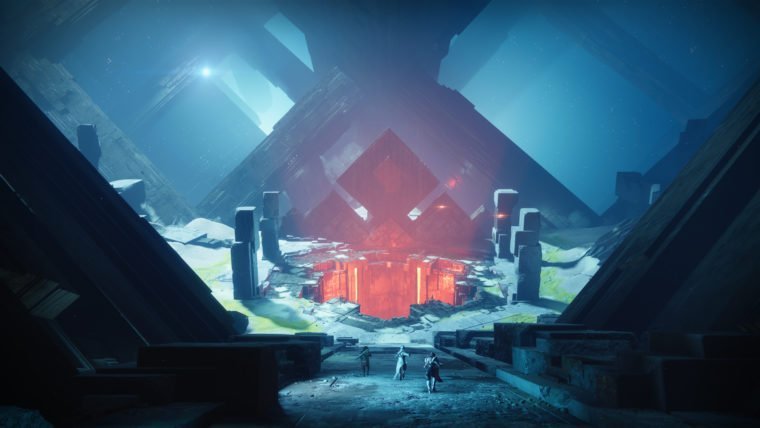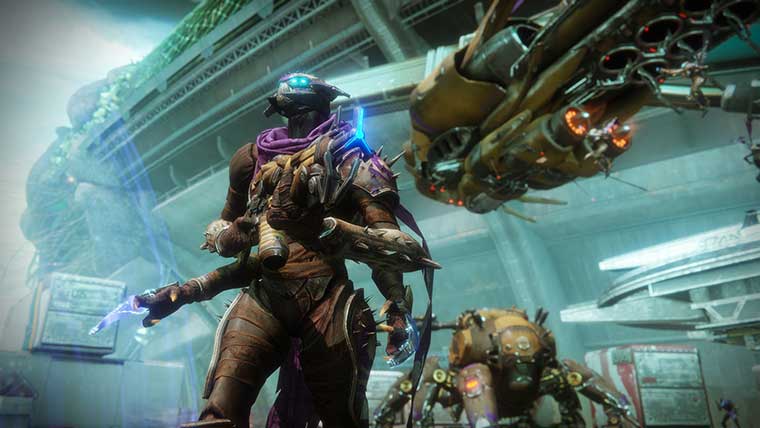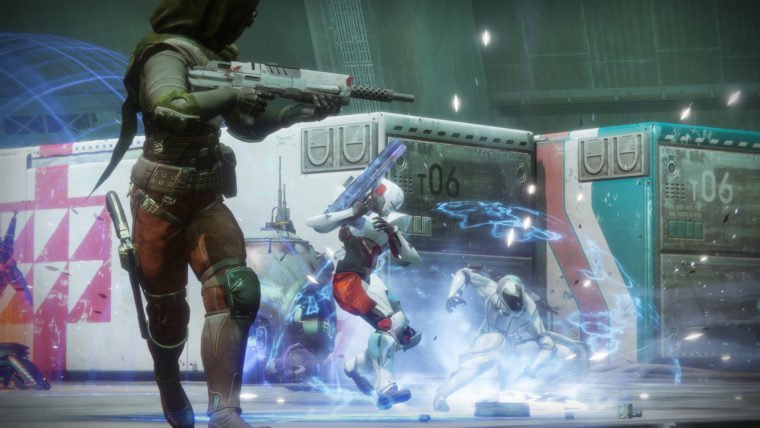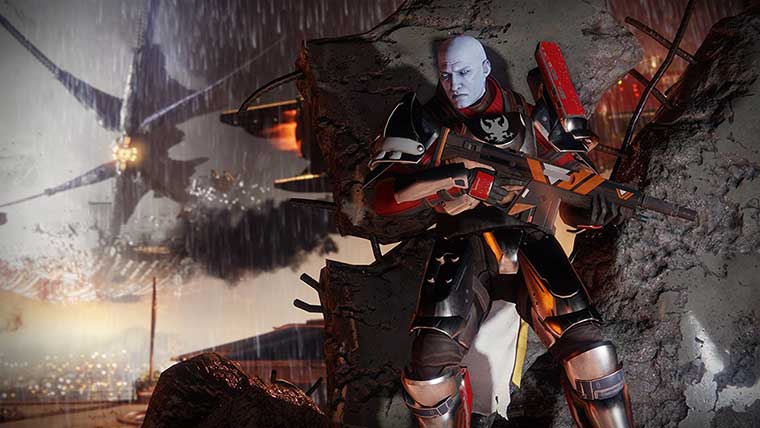Depending on who you ask, Bungie had a lot to fix between the original release of Destiny in 2014 and now. Many of the original complaints of the game stemmed from a couple of key areas. The first was an incoherent story and inconsistent world in a game that seemed to usher you from place to place in search of busy work, instead of offering any meaningful character development or world building. The second was plainly a complaint about a lack of respect for the player’s time, with many calling for quality of life improvements for a game that required a good bit of weekly dedication to get the most out of. As Destiny has been a game constantly evolving with DLC and updates, most of the latter has been fixed. I’ve played enough of Destiny 2 to assume that the former has as well.
Now I’m not going to sit here and say those are the only two problems that Destiny had, but they were two of the biggest complaints from the community of one of the most highly anticipated new franchises in the last decade, from one of the world’s premiere game developers. There were a lot of things that could’ve used tweaking and Destiny 2 feels like a refinement of all the big systems that lacked in the first game, a more cohesive experience across the board whether you come to the game seeking single player story, cooperative gameplay, or competition. Destiny 2 is not only a game intended to scratch all of these itches, but one that finally manages to do just that. That was my final impression leaving a Destiny 2 “Preview” almost a month ago. This private event in Bellevue, WA was hosted by Activision to allow critics to get to see all of the moving pieces working in concert prior to the September 6th launch. With 20+ hours into Destiny 2 playing content that I’m told is near, if not final, I’ve seen almost all there is to see in the game. However, the fact of the matter is that with a game so tied to online functionality our final verdict must be reserved for how this game works in the real world.

There’s a clear cut storyline in Destiny 2’s Red War campaign which will take you all over the game’s universe that consists of entirely new locations. With a few different opportunities to play the game in beta, almost everyone should know this part of the story. Emperor of a Cabal faction, Dominus Ghaul has set his sights on the Traveler, leading a Red Legion takeover of The Tower capturing the Guardians’ source of Light. This scatters the Guardians and Vanguard, leaving you looking for alternative ways to take on this new challenge as you’ve been stripped of your powers. There is more flavor in that single mission that opens Destiny 2 than anything we’d seen in D1 or its expansions. The question is do they keep it up? Having played around 75% in this ‘Review in Progress,’ Destiny 2’s single player campaign feels more like something that we would’ve expected from the Halo series, offering more variety than its predecessor. At this point, I don’t know how Destiny 2 ends. I’ve played enough of it to feel comfortable in saying that it’s an improvement, not comfortable enough to give Bungie the benefit of the doubt that they don’t fumble the ball on the goal line. All signs point to them having made good on their word to deliver a memorable story that pulls players into the world of Destiny 2 in a way that makes everything else worth seeing.
Update: With almost a full week of total playtime in Destiny under my belt I can now say with certainty that Bungie doesn’t “fumble the ball on the goal line” in Destiny 2. Their attention to the story of the game surpassed all of my wildest expectations of how to intertwine an interesting story and a game that is meant to live on long after the credits roll with smart design decisions.
And while the game is structured similarly to the first, there’s a lot more to see here and the quality of life changes are everywhere. Destiny 2 is still very much focused on building your character through the collection of loot which raises your power level and lets you tackle tougher enemies and challenges. The real change to this when compared to the original is in the way that this progression feels more organic and less task oriented. Each of the four new locations has plenty to do in them. You still have MMORPG type quests called Patrol Missions, but there are also story missions for NPC characters in each world. While it might not seem like a huge deviation from the original, these missions and tasks fill out the lore of the game in smart ways by simply adding small amounts of dialogue, building each character’s backstory, and ultimately creating a bigger more believable and robust world. That’s not to say that Destiny 2 is without its tasks, it’s just that the game is more clearly defined in explaining the rules to the player than it was the first time around, offering unique rewards in each world by completing objectives and story missions for each NPC of the game. The systems from the first game are still very much in place, even if they do have some key differences.
Destiny 2 Nessus Exploration Gameplay
Instead of the Tower being the main hub for your character, the Guardians have been pushed to an area called The Farm. This new social space has some familiar faces and new ones, but you’re still working on a system of reputation with each person in the zone. Turning in specific items or completing missions for these characters earns engrams or loot outright. This familiar cycle of progression hasn’t been retooled all that much. The ways that you progress, however, feel like they’ve been expanded to include both this core progression system from the first game as well as the new NPC progression which gives you good reason to visit these planets as they are uncovered throughout the story. Main path story progression is gated by your level, so you can run into an instance where you aren’t properly leveled to even make an attempt at certain story missions. While there are multiple mechanics working in tandem here, the character level and character power level seem to rise side by side as you both complete missions and gain better gear from doing so.
Titan, IO, Earth, and Nessus will play host to all of your activities in Destiny 2 regardless of game mode. Though each of these planets (or moons) are more nuanced in their structure than anything that we saw in D1. The aforementioned NPC characters of each location is one of the core changes to progression, but a combination of quality of life improvements, level design, and new challenges make each zone worth exploring. Lost Sectors which are hidden areas marked around the map leave clues that something worth finding is nearby and usually off the beaten path. You’ll encounter random high value targets, other players participating in public events that have both normal and heroic modifiers, as well as challenges that net you world specific coins to bolster your rep. It all comes together quite well on the single player front, even if you’re never truly alone in Destiny 2. There’s plenty to do, but more importantly, after 20+ hours with the game it felt like there was still much more to explore and uncover in each location. Fast traveling within each zone is one of the big changes to the way you’ll explore the content of Destiny 2. The ability to fast travel takes a lot of tedium out of the game letting players get to the content they want, almost immediately. There’s far less waiting around in orbit, watching the same scenes again and again or long Sparrow rides across expansive zones.

While Strikes had previously been tied into the main story of Destiny, they’re more of a sideshow this time around. That’s not to say that they’re not still some of the best content that Destiny 2 has to offer, but they don’t necessarily tie into the Red War story line. The original Destiny gave the feeling that the Strike was the cap on a chapter of the game. A thing that needed to be beaten to progress through the game and usually a spot where the best combat set-pieces, spectacle, and story were found. Destiny 2’s Strikes have a much different feel to them being that they aren’t tied to the story. It gives Bungie a chance to tell other side stories within the universe, introducing new characters into the world, and ultimately continuing to pad out the game with exactly what so many people complained about in the first game.. a lack of story. That said, some of the very best content can still be found in Strikes. The combat and missions are more like the first game’s Raids, offering a significant challenge with multiple difficulty levels. Six unique strikes in all, there’s no shortage of this cooperative aspect of Destiny. You can still form a fireteam and tackle these challenges with friends or matchmake into the mode. The Strikes are meant to be replayable and I don’t think the first game had an issue with that. A number of different modifiers made Strikes in the original game different on any given playthrough, making for tough combat scenarios and ample rewards when tackling the game’s weekly challenges. While we’ve yet to see if this system will change much in Destiny 2, our review will have to go back and see what’s been changed and tweaked here once the game is out in the wild. Strikes and Raids are the cooperative end-game content that keep people playing Destiny long after the story mode is over, so how Bungie handles these differently in Destiny 2 is pretty important.
There’s a lot of unknown variables that still need to play out in Destiny 2 before we can put a score on this game. While the original game didn’t have a way to meet up with other players to tackle end-game content in the Raids or Nightfall Strikes, Bungie looks to fix this problem with Guided Games and Clan functionality. This theoretically would allow people to experience content that they otherwise wouldn’t see. How this functions in the wild is still yet to be seen. Will it breed harassment or will the community use it they way it’s intended? Time will tell. These are features will roll out intermittently with the launch of the game. Even when the servers go live it will take some time to see if these features are worthy additions to Destiny and ultimately improve upon its feature set.
One thing that’s not really debatable is the level of quality found throughout the game, first in terms of presentation aspects like visuals, art-design, sound quality and soundtrack. Destiny 2 absolutely shines here. Each world feels unique, with hidden pockets of cave systems and unique art. Sound always feels pitch perfect for the situation whether on an exploration or tense firefight. The tone of Destiny always feels spot-on for the activity that you’re attempting. Second is in the gameplay. Bungie has been best-in-class for quite some time when it comes to FPS design and while they’ve introduced different variants on enemy types and the way the you fight each race, this still feels rock solid with a system of super moves and class specific special moves that can be mixed and matched alongside different weapons and armor to provide vastly different gameplay types. While the three existing archetypes return, each class, The Hunter, Warlock, and Titan can all access three sub-classes within their class for even more variety. Sub-class missions all funnel back into the story of the Guardians restoring their lost light to fight the Cabal threat. What’s most impressive about Destiny 2 is the cohesive design of all these things, with the developer not simply resting on one great feature.

While the story content, single player exploration elements and cooperative Strikes are the easiest to quantify and measure at this point, things like PvP are going to depend on what they play like in the real world. Having spent a good deal of time with Destiny 2 it’s clear that A) The multiplayer is balanced and working & B) There’ve been some sweeping changes to the Player vs Player content in Destiny 2. Weapons are categorized differently. Old reliable favorites from the original will have less play here. Teams have been trimmed to four players. Combat feels more like a mid-range shooting competition than a one hit kill festival for shotgun enthusiasts. The quick play and competitive options have a game mode for everyone, but those who like rather choose what they play will not get to here. Whether choosing the competitive version of Destiny’s Crucible or the more relaxed Quick Play version you’re kind of just stuck with whatever game Bungie decides to throw at you. Regardless, all the modes feel better than they have in the past with a greater focus on the core gun classes and less on one shot kill guns.
One of the more controversial aspects of Destiny 2 has been in the microtransaction department. As we journey towards acceptance and start saying ‘that’s just the way it is now’ we’re seeing loot boxes and cosmetic items roll out to every game. Bungie and Activision have sliced into that pie even further with the addition of shaders that have limited uses and apply to only single pieces of armor. Simply playing the game will ultimately build you a pretty hefty cache of shaders to use in Destiny 2 without dropping a dime. In some ways this new system allows for many more ways to customize your character. However, being that they are limited use, there is still the chance that you run out of the one you like the most at which point you’re going to have to either spend money or wait for it drop again.
Destiny 2 is still very much a loot shooter. While it’s great to have a nice story that ties everything together in a better manner, this is still very much a game for those that like customization and small grind-like progression in the end game. The Nightfall Strike and it’s variant are tough challenges. The Raid will likely be as well. We expect live events to keep Destiny players coming back in the weeks and months ahead. Level 20 and story completion is just the beginning for Destiny 2 and what’s on the other side is a lot of fun to play for the player who enjoys this type of character building. Bungie does do a better job of showing players all of the different avenues that they can take to face their toughest challenges though, whether player preference is working with others, playing by themselves, or playing against others in PvP.
The Verdict
Destiny 2 is a significant improvement over the original and its expansions in that the game makes more sense this time around. The campaign, cooperative and competitive game modes come together to form a more cohesive and focused experience.











Published: Sep 5, 2017 09:01 am